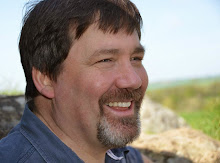Originating in Prague in 1453-54, a new church was formed through the preaching of the local Archbishop Rokycana and his nephew Gregory. The church had historic links with an earlier group - the Chelic Brethren - which was started through the ministry of Peter Chelcicky (1390-1460), a reformer who was himself influenced by the writings of John Wycliffe. Chelcicky rejected monasticism, the secular power of the church and the use of force in religious affairs, affirming instead the local church as the Body of Christ comprising believers.
The Bohemian Brethren embraced much of this earlier foundation and emphasized the ethical teachings of Christ, rejecting the church's participation in the affairs of state, including military service. They maintained a belief in much core Catholic doctrine - including the seven sacraments and the celibacy of the priests - but emphasized the centrality of personal faith in Christ.
The Bohemian Brethren embraced much of this earlier foundation and emphasized the ethical teachings of Christ, rejecting the church's participation in the affairs of state, including military service. They maintained a belief in much core Catholic doctrine - including the seven sacraments and the celibacy of the priests - but emphasized the centrality of personal faith in Christ.
As the movement developed, it eventually outgrew its Catholic structures and established churches overseen by synods and bishops. A number of schools were also established in several communities.
Following a wave of persecution, the Brethren relocated to Moravia where the movement eventually merged with the local Moravian brethren and Calvinist churches.
In Bohemia itself, the movement eventually forged links with the Lutheran church and achieved state recognition. Following a Catholic-backed military campaign, Protestantism was virtually eradicated for 150 years in Bohemia at the Battle of the White Mountain. Some scattered groups eventually migrated to Saxony under the protection of Count Zinzendorf in the early C18.
Post Script: if for some reason you're not too familiar with geography of late mediaeval Central Europe, there are some great antique maps of

No comments:
Post a Comment